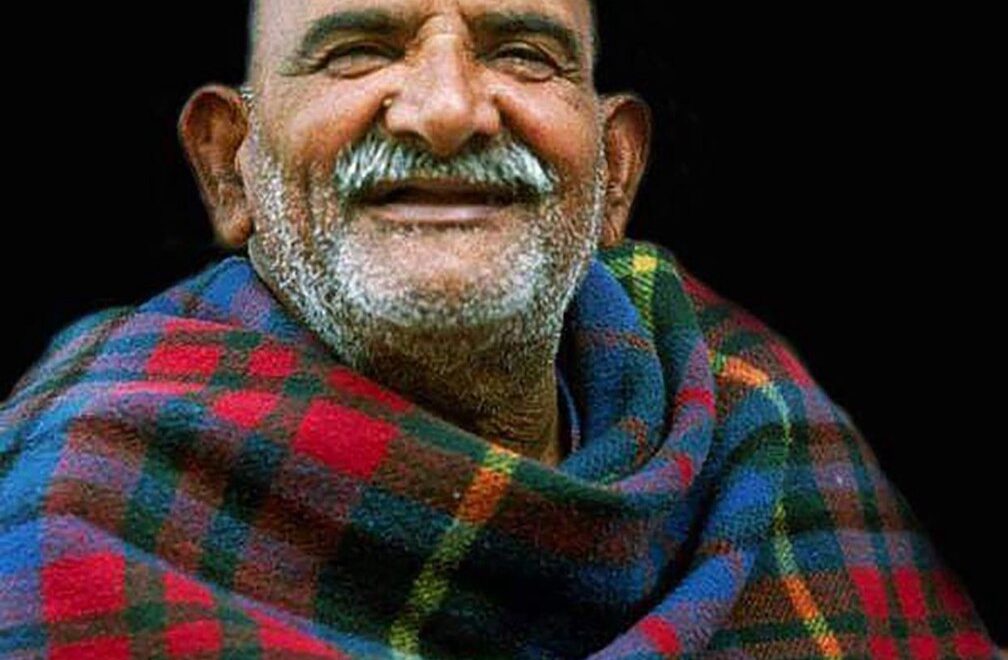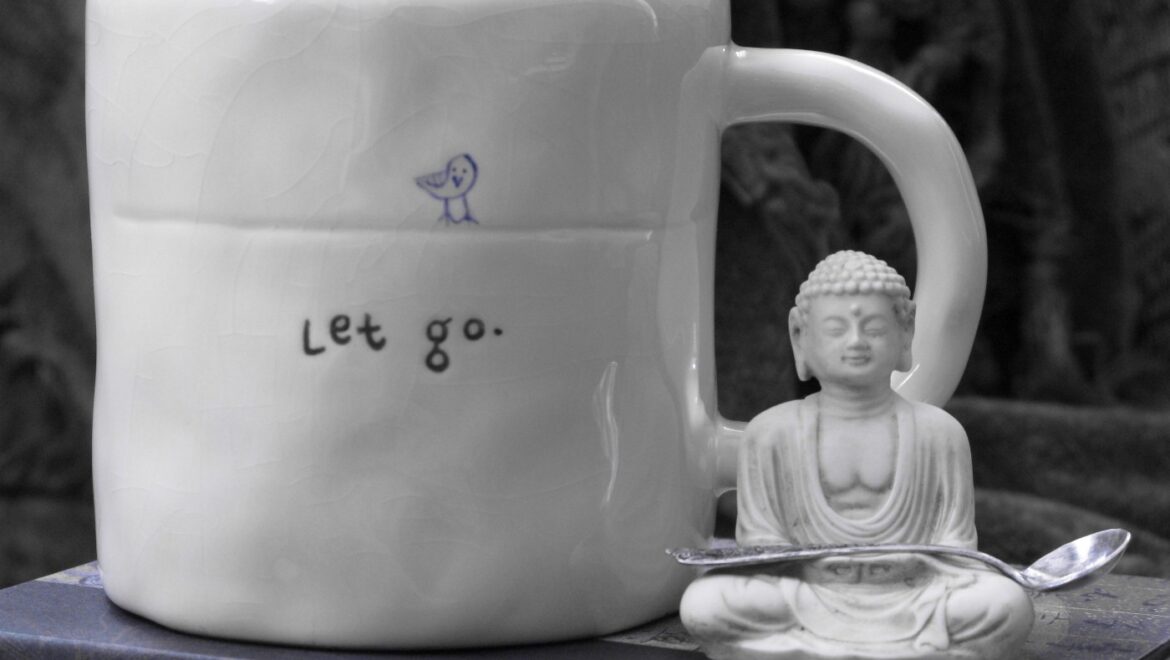The Mind-Boggling Story of Dr. Larry Brilliant, Maharajii and Eradicating Smallpox
A couple weeks ago I wrote an article (link here) about renowned doctor Larry Brilliant and the beautiful story of how he found Maharajii as his guru. Today we revisit Dr. Brilliant and Maharajii for a story that had a significant impact on world health.
Seriously? A long-bearded, long-haired, young hippie doctor and his old, barefoot, blanket-wearing guru played a hand in altering world health?
Yes. Here’s how.
Dr. Brilliant meets Maharajii
First, a summary of my article on how Brilliant came to be a devotee of Maharajii, also known as Neem Karoli Baba. After spending a week at Maharajii’s ashram in Kainchi, India, at the urging of his wife, Brilliant concluded that they were a bunch of crazy cultists and decided his marriage was over and that he had to leave.
The day before his departure he took a walk around a nearby lake and prayed to God, something he’d never done before, for a sign. Anything to help make sense of his painful situation. He got no sign.
The next morning he went to say goodbye to Maharajii, his wife and the rest of the “crazies.”
Maharajii asked him if he walked around a lake the day before, something Brilliant hadn’t told anybody. He then asked if he was talking to God at the lake; and also if he’d asked God for a sign. At that moment, Brilliant crumbled into a puddle of tears and knew that he’d found his guru.
As we used to say in Hollywood in my previous life as a television writer, ‘cut to’ several months later. Brilliant was enjoying the ashram life with Maharajii and his wife and fellow devotees.
“How much money do you have?”
One day, he was sitting with Maharajii. Out of nowhere, Maharajii asked him how much money he had. Before sliding straight to “I see. Another money grubbing guru huckster…,” you should know that many Westerners with big money offered it to Maharajii and they all said the same thing: He wouldn’t take it.
So Brilliant, thinking he meant how much money he had with him in India, responded, “Five-hundred dollars.”
Maharajii then said, “No, how much money do you have back in America?”
Brilliant thought about it, then said, “Actually, about the same. Five-hundred dollars.”
Maharajii started laughing. Then he repeated, over and over, “You’re no doctor! You’re no doctor! You’re no doctor!”
Brilliant said it made him feel like he was with his mother who lamented that they’d sent their son to medical school yet he made no money.
U.N.O. doctor
But then something strange happened. Maharajii stopped laughing and then started saying, repeatedly, “You no doctor. You no doctor. U N O doctor. U N O doctor.”
Brilliant didn’t understand what he was saying. Then the interpreter said Maharajii was saying U.N.O. doctor. Turns out in India they refer to the UN as the United Nations Organization, or U.N.O.
He was telling Brilliant that he was going to be a UN doctor and that he was going to give smallpox vaccinations in Indian villages. After this was explained to Brilliant, Maharajii said, “Tum jao!” which means ‘you go’ in Hindi.
Brilliant asked if that meant the meeting was over. Maharajii said, “No! I want you to leave right now and go to the UN in Delhi and get a job working on smallpox.”
And that was that. Brilliant got up, figured out how to get to the UN office and left.
History of smallpox eradication
Before relating what happened next, some quick history. Smallpox had been around for literally thousands of years, killing billions. But America had wiped it out by 1949 and in the early 1970s only four countries still struggled with it, India being the most populous and problematic. And because India exported many cases around the world, eliminating the disease for good meant it had to be eradicated in India.
Which brings us back to Larry Brilliant’s odyssey. He went to the U.N. W.H.O. (World Health Organization) office in Delhi and asked for a job working on smallpox. They told this guy with long hair in a robe ‘thanks, but no thanks.’ He had no experience in public health and, for political reasons, Americans were not welcomed to work in India at the time.
Rejected ten times by WHO
So he went back to the ashram and told Maharajii they rejected him out of hand. Maharajii told him to go back and try again.
Long story short, this happened ten times in two months! Brilliant tried different approaches but was rejected every time. Mind you, it was a 17-hour trip each way to Delhi.
The person in charge of the WHO-India smallpox program, a French doctor named Nicole Grasset, was the one continually rejecting Brilliant. He told her repeatedly that his guru had insisted he was going to work on eradicating smallpox in India, which was the only reason he was pestering her so much for a job.
A serendipitous call
Two months into this madness, a frustrated Brilliant called Dr. Grasset and told her that he and his wife were going to Kashmir for a few weeks and that if anything came up, to please get in touch with him in Srinigar.
Dr. Grasset said it was bizarre that he called right then because she’d just had an inspiration about him. Maybe he could come on as a report writer on the project. Brilliant accepted. Anything to get Maharajii off his back.
In the first few months the WHO team prepared plans for going into the Indian hinterlands to deliver shots.
After studying smallpox intensively these first few months, Brilliant learned just how horrid the disease was. This led him to ask Maharajii if the disease would, indeed, be eradicated. He remembered Maharajii’s answer word for word many years later because he wrote it down.
Maharajii said:
“Smallpox will be eradicated. This is God’s gift to mankind because of the hard work of dedicated medical scientists.”
His prediction played a major role in getting the job done. How? When it came time to go into the field, Brilliant wondered how Maharajii’s prediction that he would deliver shots could be true because his job was to remain in the office and write reports.
Russian doctors bow out
Then, as happened repeatedly with Maharajii, something serendipitous occurred. The two Russian doctors who were to cover the area where Maharajii had lived got held up in Moscow over government red tape.
This left a giant hole in the map in an area with one of the worst smallpox situations in India. Dr. Grasset reluctantly sent the inexperienced Brilliant in to do the job. He was the only person available.
Brilliant put a big picture of Maharajii on the dashboard of his jeep and ventured into rural India. Virtually every village doctor initially turned him away, saying they had too many other health issues to deal with.
Maharajii’s picture saves the day
As part of Indian courtesy, they would walk him out to his jeep. There they would see the picture of Maharajii and ask who it was. Brilliant, in retelling this story in Ram Dass’s book Miracle of Love, would say,
“Oh, he’s my guru. He told me to go work for the United Nations. He told me smallpox would be eradicated. He told me this is God’s gift to mankind through the hard work of dedicated medical scientists.”
The village doctors would then invite him back to the office and ask what they needed to do. Brilliant said this happened several times.
He said that many other Indian officials told him that he didn’t understand India. That smallpox could be eradicated everywhere else, but never in India.
Then he’d tell them that Maharajii said it would happen and they’d change their minds and cooperate.
Brilliant sent to the toughest areas
This led to Dr. Grasset sending Brilliant to the areas meeting the stiffest resistance from the local doctors. And again and again, by telling them of Maharajii’s prediction, they decided to cooperate.
The long and short of their work? When they started in 1974 there were 190,000 cases and 30,000 deaths per year in India. In October of 1975 India had its last reported case of smallpox.
Brilliant said of that case:
“I had the privilege of seeing the last case of smallpox in India. A young girl named Rahima Banu had completed smallpox in October of 1975 and did not die. That was the last case in an unbroken chain of transmission of killer smallpox that went all the way back to Pharaoh Ramses and beyond, probably 10,000 years.”
The last known case of smallpox occurred in Somalia in 1977. Eradicating this horrific disease is thought by many to be the greatest public health success ever.
Why write about this?
So what does this all mean? Why write an article about Maharajii telling Dr. Larry Brilliant to go work on smallpox?
First, a clarification. I’m not saying that Brilliant and Maharajii were responsible for eradicating smallpox in India. Thousands of doctors, WHO employees, government officials and volunteers worked together to achieve this herculean task.
But it’s likely that eradicating smallpox from India would have been extremely difficult if not for Maharajii’s influence in areas that were both resistant to cooperating and had serious smallpox exposure.
The inexpressible beauty of Maharajii
Beyond that, it’s yet another remarkable story about a remarkable being. I’ve done some serious trekking on the spiritual path for many years now and have yet to find anyone more impressive than Maharajii.
Many of you know that I’m a big fan of Mickey Singer, Ram Dass (another Maharajii devotee) and Eckhart Tolle. I’ve also dived deep into other Indian saints who have impressed me, namely, Ramana Maharshi, Ramakrishna and Yogananda.
Every one of these people has blown me away with their wisdom, compassion and presence. And yet, nobody holds a candle to Maharajii.
I keep trying to express my reverence for Maharajii with eloquence and depth. And I keep falling short.
I gave it another shot with this article. And I’m going to keep trying, with the hope that someday many of you will come to appreciate this beautiful being.










